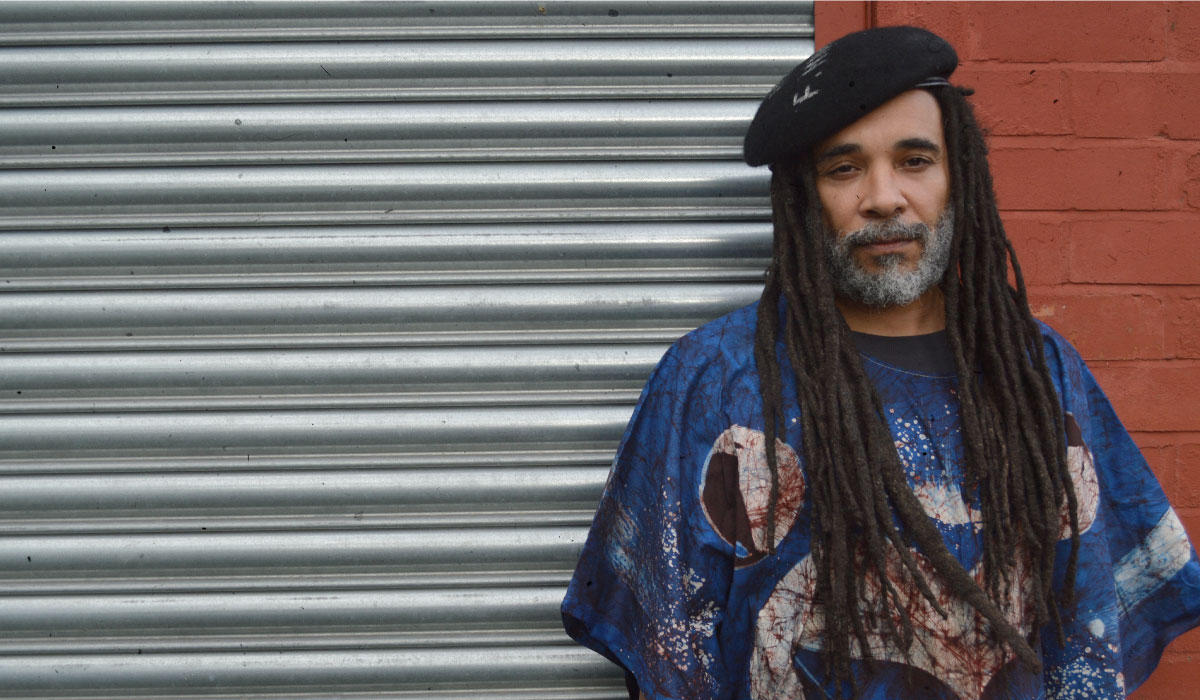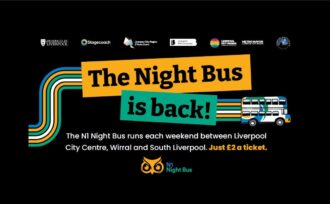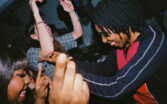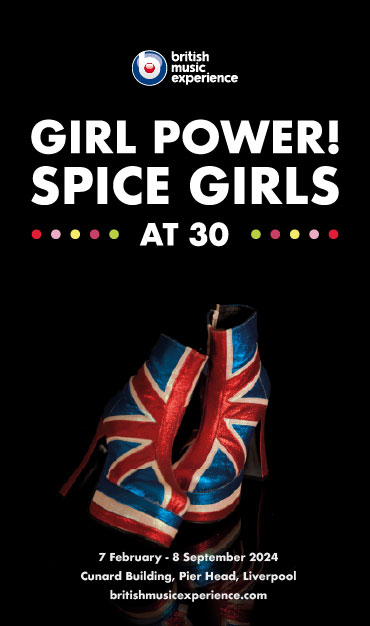CREATORS CONNECT – ANDREW IBI
Hello all, my name is KOJ – I’m a rapper and have been creating music consistently over the last 5 years. I’ve always been fascinated with the work of creatives who don’t necessarily make music, but make the music industry tick. So, I decided to connect with a few of Liverpool’s best to find out more about them and give them their flowers. For the first installment, I spoke to Andrew Ibi.
Andrew Ibi is a heavyweight visual designer. In the 80s, fashion culture was taking a futuristic turn and, in many ways, this is where Andrew’s journey kickstarted. Ibi began making garments in his early teens. Since then, he has gone on to launch his own fashion labels, fashion stores and co-founded BOLD agency. More recently, Andrew has led the design and communications course at LJMU, influencing tomorrow’s generation of young fashion trailblazers.
Hi Andrew. You’re a heavyweight in the UK fashion industry – was there a pivotal moment that made you realise this was your calling?
I guess growing up in South London in the 80s was instrumental. We were just into style and cool stuff – trainers, sportswear, brands… and as Black Britons, we were defining our own culture. I got into high fashion early through my brother and his mate. By the time I was 13/14 I was designing and making clothes with him for our circle. We would go down to Brixton market, buy fabrics and then knock up garments – and getting paid! Our friends loved having one-offs.
What do you see as the link between fashion and music?
It’s intrinsic. It really comes through music – but it’s more style than fashion. I consider fashion as the industry now – the catwalk, Bond Street, commercialism, Vogue magazine and shopping. Style is innate and handed down generationally.
Music is intrinsic to style and clothes, particularly in youth culture, where there is always a uniform. Fela Kuti/Afrobeat, Ska and the rude boys, Motown, mods – the first punks played Reggae 45s in their clubs. The New Romantics were musicians and designers, with a club scene that defined young British fashion on the runway – the Blitz Kids. The late 80s/early 90s Jazz Dance scene had great style, and the The Funky Dreads led by Jazzie B. The football casuals are a bit of an anomaly though, particularly the rough house characters – not sure they were into music, just chanting. Then there was Acid House – so they stopped punching and kicking people and got back into music.
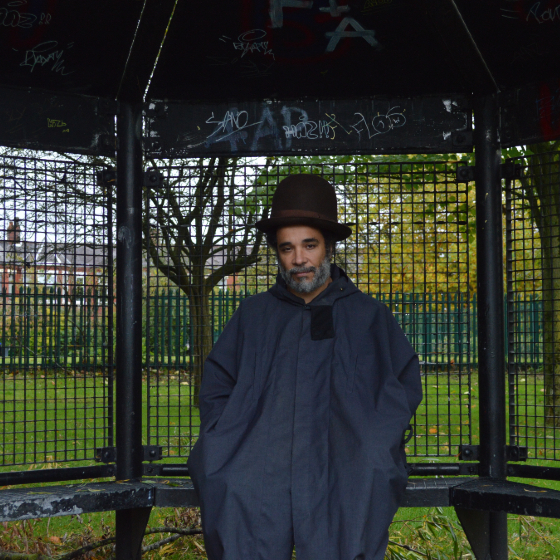
The point is, young people invent 360 culture and it always impacts the fashion industry. Designers like Nicholas Daley, Saul Nash, Bianca Saunders and Wales Bonner are obsessed with its translation and backdrop to the formal design process. Black culture specifically connects music to fashion more often than not, which rubs off on the wider business of fashion. Black people have perfected style; therefore its impression on fashion is now mainstream. The obvious link is now Pharrell as creative director for Louis Vuitton, and of course recently, Rihanna’s influence. The formal, catwalk obsession with Hip-Hop probably started with Versace and Lil Kim in 1999. Before that, Dapper Dan was dressing the early heroes of Hip-Hop. You can go even further back to Cab Calloway and the Cotton Club – the zoom suit – even Malcolm X rocked zoots before he converted to Islam.
How does music influence your own work?
Music has a massive impact on my work – whether design, illustration or curation. New musicians or old; their legacy style and the style tribes they commandeered are always tremendous reference points to design from.
Obviously as a DJ and selector the link is there, but from this perspective I’m often fusing music and fashion through the worlds I try to create in clubland. The music, dancing and style is all one and the same – Black culture really understands and embraces it. Standing out is really important.
Your latest exhibition ‘The Missing Thread’ showcases Black British struggles through the lens of fashion. What inspired this creative direction?
Anger, frustration and an industry that needs to be honest. I needed to tell the story through a Black lens and to make sure following generations have access to a fully illuminated diary of key events. Controlling our own narratives now, as well as retrospectively, is crucial to our cultural development and survival. Too many untruths have been told, with our image being shaped by the white mainstream. Taking back power and being clear about cultural innovation and invention is fair, not political. Plus, somebody needed to do it, so I was grateful to work with Harris Elliott and Jason Jules as co-curators. The project was a cathartic process, and of course, the exposure to creativity, individuals and piecing it altogether has been an amazing journey to expand learning and knowledge.
In your opinion, what determines good fashion?
Culture is the determining factor. I think anything goes now – the world is ‘mostly’ ready for it. The Met Gala is now the ultimate fashion social, with looks becoming more and more outlandish. As long as fashion has purpose, it’s acceptable. The work designers produce on runways is acceptable as performance. Musicians and performers on stage – whatever you want, as long as it’s practical within the context of the show. Streetwear – do what you feel. Clubwear – go for it. We’ve been through a full rotation of crazy in relation to fashion; young people need to, and will, drive it to new heights.
Who is the ultimate music artist x fashion icon and why?
There are so many, but if I had to pick one, it has to be Grace Jones. She completely rewrote and challenged the rule book in relation to Blackness and being a woman (and continues to do so). She was so closely aligned to style and traditional fashion. In fact, her music was almost secondary. She truly is iconic.
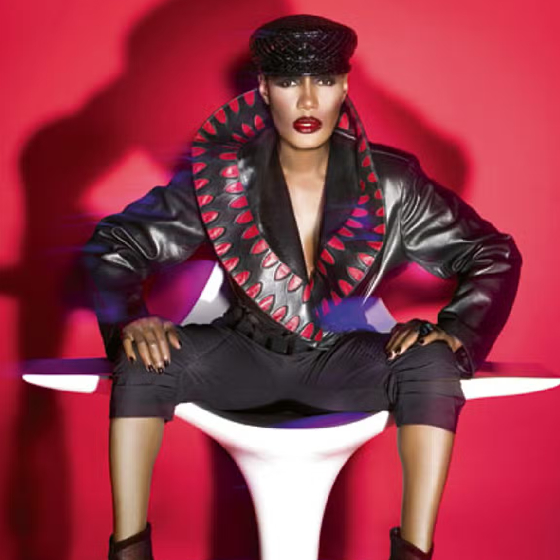
What 5 songs would be included in the soundtrack to your career?
Only 5? It’s impossible and completely neglects my interest in Hip-Hop. It’s also not at all gender-balanced, which I’m ashamed of. However, it’s also insight into the bias of the music industry.
Miles Davis – Black Satin
Sun-Ra – Space is the Place
James Brown – Mind Power
Fela Kuti – Expensive Sh**t
Gil Scott-Heron – The Revolution Will Not Be Televised
Bonus track – Soul II Soul – Fair Play.
5 tracks by women:
Nina Simone – Four Women
Vicki Anderson (Myra Barnes) – Message From The Soul Sisters
Big Mama Thornton – Hound Dog
Lidaju Sisters – Orere Olejigbo
Rhonda Scott – Slipping Into Darkness
Bonus Tracks: Sister Nancy – Bam Bam and Sade – Sweetest Taboo
I cheated.
Words by KOJ / @bigdaddykoj

